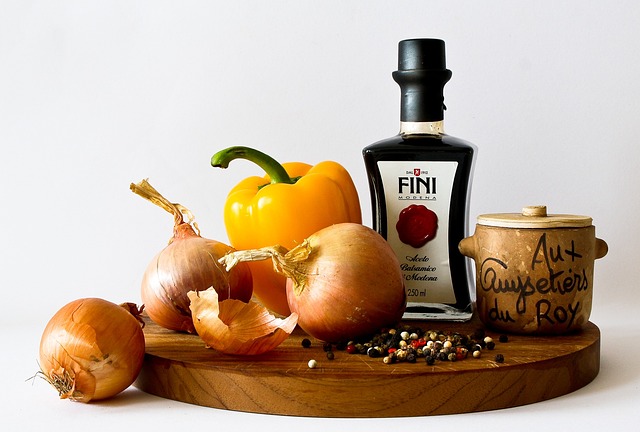Water waste is a significant global issue exacerbated by outdated plumbing systems and inefficient fixtures. Recent studies show that simple upgrades like water-efficient fixtures can save American families up to 900 gallons of water annually. Energy-efficient kitchen appliances, such as low-flow faucets and high-efficiency dishwashers, offer dual benefits: conserving resources and reducing utility bills. Water-saving faucets, like aerator and sensor-activated models, mix air with water or use motion sensors for automatic activation, enhancing hygiene while saving water. Proper installation and regular maintenance ensure maximum efficiency. Widespread adoption of these energy-efficient kitchen appliances contributes to global efforts in preserving precious water resources for future generations.
Incorporating water-saving faucets and fixtures is a smart step towards reducing household water waste, an issue of growing concern worldwide. This article delves into the current water waste scenario, highlighting the significant benefits of energy-efficient water fixtures for both your wallet and the environment. We explore various types of water-saving faucets, installation tips for optimal efficiency, and long-term savings potential, especially when considering modern, energy-efficient kitchen appliances as part of a sustainable lifestyle.
Understanding Water Waste: The Current Scenario
Water waste is a growing concern in today’s world, with households and businesses contributing significantly to this issue. The current scenario reveals that a substantial amount of water is wasted due to inefficient plumbing systems, especially in older buildings. Outdated fixtures and appliances, such as leaky faucets and outdated washing machines, play a major role in this crisis. According to recent studies, an average American family can save up to 900 gallons of water annually by installing water-efficient fixtures.
The increasing demand for energy-efficient kitchen appliances has also led to advancements in water conservation technology. Modern kitchen appliances, like low-flow faucets and high-efficiency dishwashers, are designed to reduce water usage without compromising performance. By adopting these innovations, we can not only conserve precious resources but also lower utility bills, making it a win-win situation for both the environment and our wallets.
Benefits of Energy-Efficient Water Fixtures
Incorporating energy-efficient water fixtures in your home, such as water-saving faucets and showerheads, offers a multitude of benefits that extend beyond conservation. These innovations significantly reduce both your water and energy bills, making them a smart investment for any homeowner looking to slash expenses and contribute to environmental sustainability.
Beyond financial savings, energy-efficient kitchen appliances and fixtures promote responsible resource management. By minimizing water usage, these fixtures help preserve this precious resource for future generations. Additionally, many modern models boast sleek designs that enhance aesthetics, proving that eco-friendly choices can also be stylish and contemporary, making them an appealing option for any home renovation project.
Types of Water-Saving Faucets and Their Functionality
Water-saving faucets come in various types, each designed with unique features to reduce water consumption without compromising functionality. One popular option is the aerator faucet, which mixes air with water to maintain pressure while significantly decreasing flow rates. These aerators are easily retrofitted to existing faucets and are available in different spray patterns to suit various washing needs.
Another type is the sensor-activated faucet, which uses motion sensors to turn on and off automatically. This technology not only saves water by eliminating unnecessary flows but also enhances hygiene, especially in commercial settings or high-traffic kitchens. Additionally, some advanced models incorporate temperature control, ensuring a consistent warm or cold water setting while minimizing wastage. Incorporating these energy-efficient kitchen appliances is a step towards sustainable living and can contribute to significant long-term savings.
Installation Tips for Maximum Efficiency
When incorporating water-saving faucets and fixtures, proper installation is key for achieving maximum efficiency. Start by ensuring all components are securely fastened to prevent leaks, as even tiny drips can waste significant amounts of water over time. Use high-quality products designed for low-flow rates while maintaining pressure, which ensures a satisfying user experience without compromising conservation efforts.
For optimal results, consider pairing these fixtures with energy-efficient kitchen appliances that further minimize water consumption. Install aerators on existing faucets and showerheads to reduce water usage without sacrificing performance. Additionally, regular maintenance, such as cleaning mineral deposits, can help keep water flow optimized over the long term.
Long-Term Savings and Environmental Impact
Incorporating water-saving faucets and fixtures isn’t just a short-term solution; it’s an investment in long-term savings and environmental preservation. These energy-efficient kitchen appliances significantly reduce water consumption, translating to lower utility bills over time. By conserving water, we also alleviate the strain on local water resources, ensuring availability for future generations. The environmental impact extends beyond individual homes; widespread adoption of water-saving technologies contributes to global efforts in preserving this precious resource, fostering a more sustainable future.
Incorporating water-saving faucets and fixtures is a practical step towards reducing individual water waste, promoting sustainability, and cutting down on utility bills. By choosing energy-efficient kitchen appliances like these, we can contribute to long-term savings while preserving our planet’s precious resources. With simple installation tips and significant environmental impacts, there’s no better time to embrace these innovative solutions.
